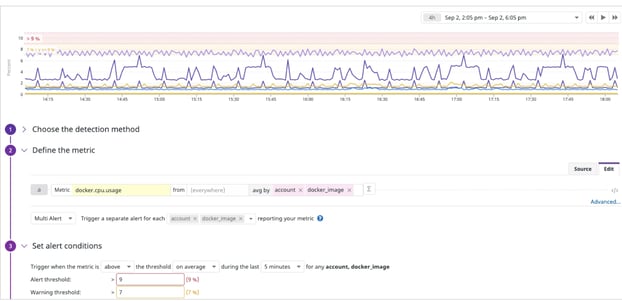
What is APM?
Application Performance Monitoring is the critical tracking of key software application performance metrics using monitoring software and telemetry data. APM users generally observe the service performance, system availability, response times, and errors to improve users' experience. You can observe many applications like the mobile, back end, front end, and business apps with APM tools. Why Do Developers Use APM?
Today's app users are sophisticated and demand fast and functional services whether they are listening to music, shopping, watching movies, using social media, working, or managing their finances online.
The app and brand images are severely corroded when users experience these applications crashing, opening slowly, or not functioning. Statista presents data to suggest that 25% of downloaded apps are only used once. In order to avoid such situations, the application and application’s performance should be well monitored and analyzed in detail.
However, digital teams often find it a challenge to identify the root causes of an application’s performance issues. The problem range can include:
- Coding errors
- Database slowdowns
- Database misconfiguration
- Server issues
- Hosting/network performance
- User’s device operating system
Web and mobile applications may seem simple to end-users, but managing the underlying codes of thousands of lines is not trivial. This is why digital teams use APM tools to view and address the many variables that can affect an application's performance. In the absence of these tools, it is quite possible that customer dissatisfaction will result.
APM tools that offer root cause analysis are an excellent solution for larger businesses due to the volume of data that such organizations consume. Root cause analysis of errors significantly speeds up the diagnosis process and provides vital insight into the events that occurred across the whole application stack.
APM Tools Common Features
Let’s consider the common features of APM tools.
Application Performance Monitoring
APM software assists DevOps to ensure that a company's essential applications fulfill set performance, availability, and customer or end-user experience goals. APM tools monitor application performance and notify administrators when performance benchmarks aren't reached. This ensures instant visibility over the fundamental causes of performance issues.
Web performance monitoring, while sometimes combined with User Monitoring, provides DevOps with the performance metrics available within the browser. APM suppliers that offer web-based Real User Monitoring (RUM) typically also offer web-based performance monitoring.
Application Metric Monitoring
The collection and monitoring of metric data a critical to providing development teams with the information they need to minimize server-based errors and resource shortages. Having this feature in most APM tools provides great advantages for software and system administrators.
Application Log Data
Logs will be the first thing the developers will want to troubleshoot errors. Therefore, most APM tools are designed to integrate with log data stored in a centralized logging system, such as a log monitoring package.
Error Reporting
It is quite natural for software developers to encounter errors, but it can be difficult to detect these errors and take precautions before they become serious. To mitigate this, it is very important to monitor, collect, and analyze those errors.
Many APM solutions monitor both application-level and server-level issues by interacting directly with popular frameworks and programming languages. Many APM solutions also enable web performance monitoring – revealing browser-based errors.
Load Testing and Alerts
Not all applications need to scale, so load testing is not always supported by internal tools and niche products. Large-scale consumer applications, however, must provide a high level of availability, which means you need tools that perform load testing and monitor resource utilization. Your APM platform provides vital data to assist your teams to understand the performance of the application infrastructure at various load levels to optimize scalability and enhance long-term planning.
APM Best Practices
Ensure you have the right APM tool
Before you choose an APM tool, you need to define your application architecture and requirements, SLAs, and then select an APM tool that suits your setup. Because there are many APM tools with different service offerings, such as monitoring, collating error rates, monitoring SLA-related metrics, etc., it is vital to select the optimal tool.
Configure Custom Alerts
In the event of critical issues, performance drops, or insufficient resources, the individual team needs to be updated about the impact before the customer or end-user experiences issues. APM tools provide configurable alerting policies whereby you can specify thresholds on various metrics such as response times and error rates, etc.
Datadog dashboard
Image courtesy of Datadog
Set up Customized Dashboards for your Applications
When you manage multiple applications with APM tools, it is easy to become overwhelmed with the many metrics, graphs, and other data visualizations thrown at you. It is vital to create a focus on the aspects of performance that really matter. To assist, APM tools allow users to create custom dashboards. Your dashboard is the first page that opens up when you log in to your APM service. This page should quickly present you with a broad idea of how your application is faring overall.
Datadog dashboard
Image courtesy of Datadog
Use the Machine Learning Algorithms and Features
Some APM tools have machine learning features. Their data-driven insights can provide high-value information to the development and DevOps team. Configure and manage your APM tools with that feature and isolate the root cause of performance slowdowns using built-in correlative intelligence.
Prioritize Critical Transactions
Typically certain transactions in your application are more critical than others. For example, you would be more concerned about an e-Commerce cart page’s response times than the “deals of the week” page.
Improve Team Capacity
APM tools have many features; therefore, familiarizing users with the tool is essential. Ensure that everyone on the team understands the configurations, and facilitate knowledge transfer and training. Developers can benefit a lot from simple and minimal training with an APM platform. This can help them understand the business importance of application performance and code and build better software accordingly.
Organizations may differ in their decision as to whether they need a dedicated group that overlooks APM operations or wants everybody to pitch in and extract APM insights for their own work.
Our Favorite APM? Datadog
It is not the intention of this article to compare the top APM tools. But, everyone has a favorite APM, and for us, that has to be Datadog. Datadog supports the monitoring of servers, databases, tools, and services. Datadog encompasses all the features mentioned above, and critically, you can easily integrate Datadog with many applications and a wide variety of services that cover several use-cases.
Logging is a key function of APM tools, and Datadog offers excellent logging integration. Datadog offers out-of-the-box integration solutions for collecting logs from hosts, Docker environments, serverless environments, and cloud providers.
Datadog utilizes agents, and those agents can tail log files or listen to logs and ingest metric data. Also, Datadog’s tracing is excellent. We love that the collected traces seamlessly correlate to browser sessions, logs, synthetic checks, network, processes, and infrastructure metrics across hosts.

Datadog dashboard
Image courtesy of Datadog
Conclusion
Using APM devices while doing personal or small projects may not make much sense to you, but as your application and capacity grow, it will be difficult to monitor applications and understand errors instantly. Therefore, the use of APM tools is vital to observe error rates, identify the source of errors, monitor applications, and ensure you mean your SLAs.










